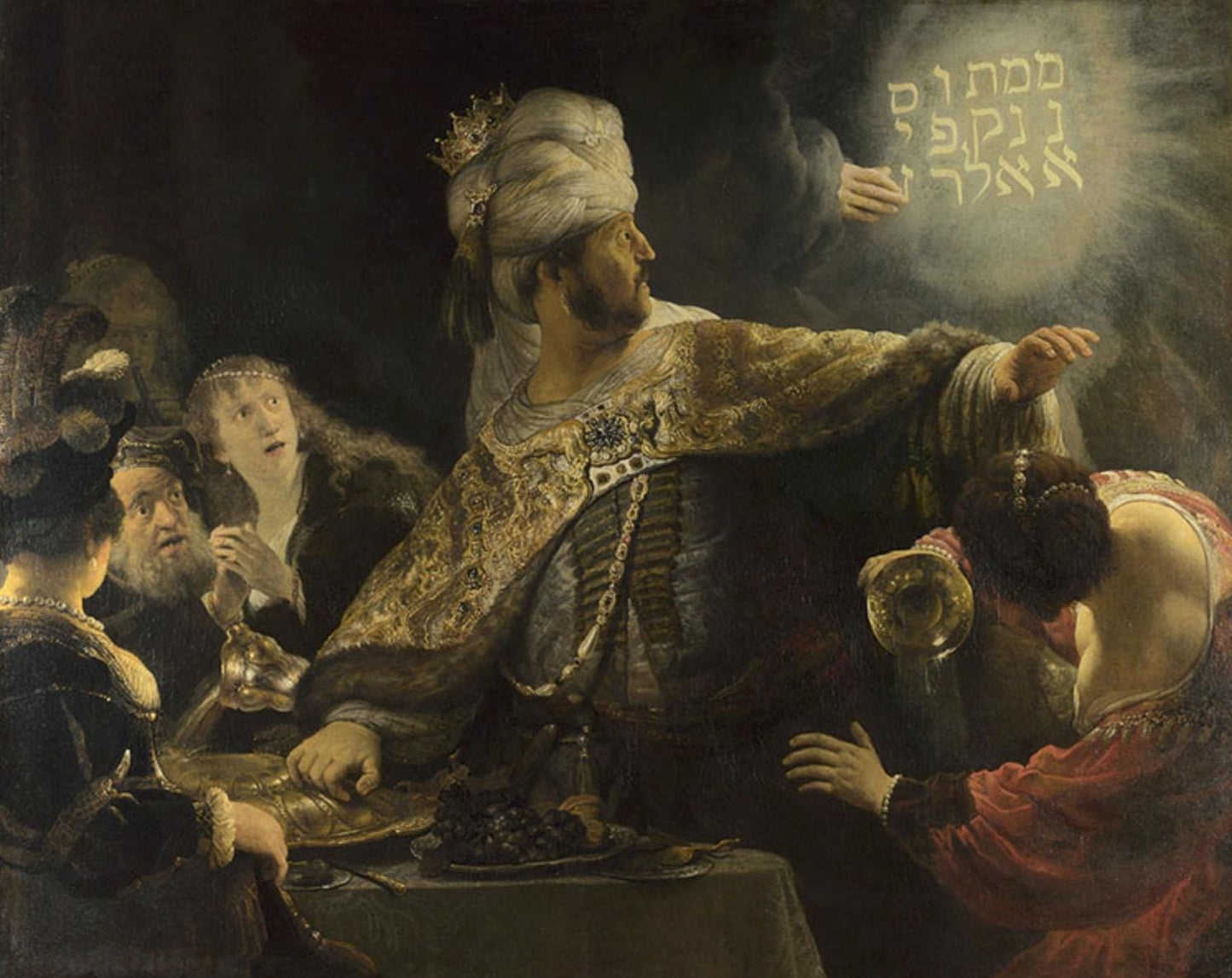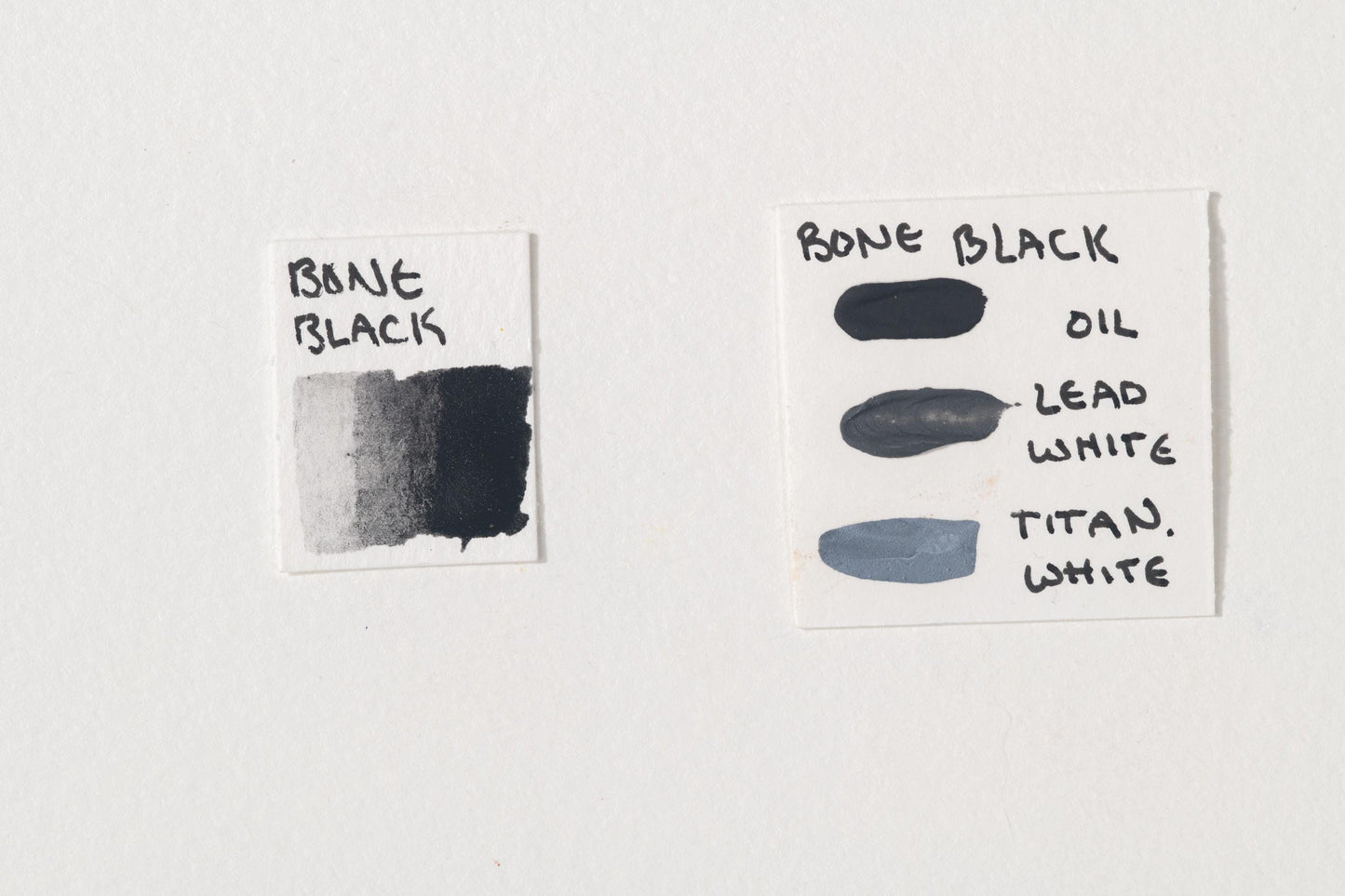Bone Black
Bone Black
Couldn't load pickup availability
Share



Description
Bone Black is a handmade natural single-pigment black, historically produced through the charring of animal bones in a low-oxygen environment. This process creates a deep, rich black pigment composed primarily of carbon and calcium phosphate. It has been used for centuries in fine art, printing, and restoration work, prized for its unique warm undertones and strong tinting strength.
Bone Black produces a deep, slightly warm-toned black that is less intense than synthetic blacks but more natural and harmonious in mixtures. It has excellent tinting strength, allowing for rich shadows and subtle neutral tones when mixed with colors. The pigment is incredibly stable, offering outstanding lightfastness and durability over time. It disperses well in most binders and works across various mediums, making it a versatile choice for artists and craftsmen.
History
Bone Black has been used as a pigment since ancient times, appearing in Egyptian paintings, tomb murals, and Greek pottery. The Egyptians used it in their ink and fresco work, and it was a standard black pigment in Roman art. Throughout the Middle Ages, it was widely used in illuminated manuscripts and frescoes, providing deep blacks and subtle shading.
During the Renaissance, artists like Leonardo da Vinci and Rembrandt favored Bone Black for its rich depth and warm tone. It was a crucial pigment for Baroque painters, who used it in oil paintings to create dramatic chiaroscuro effects. In printmaking, Bone Black was a preferred pigment for making deep black inks due to its ability to produce fine detail without excessive gloss. In the pictured artwork 'Belshazzar's Feast' by Rembrandt, bone black is used for the deep shadows behind the figures.
By the 18th and 19th centuries, it became a standard in both industrial and artistic applications. The rise of synthetic carbon blacks in the 20th century reduced its use in some industries, but it remains a favored pigment for traditional artists, restorers, and those who appreciate the natural qualities of historical black pigments.
Health and Safety
Precautions:
Keep out of reach of children and pets.
Do not consume.
Not for cosmetic or food usage.
Do not spray apply.
For further health information contact a poison control center.
Use care when handling dry pigments and avoid dust formation.
Use particular caution with fibrous, fine, or toxic pigments.
Do not eat, drink, or smoke near dry pigments. Avoid breathing in pigment dust and use a NIOSH-certified dust respirator with sufficient rating for dry pigment.
Wash hands immediately after use or handling.
If dust is likely, always wear protective clothing to keep out of eyes, lungs, off skin, and out of any contact as well as keep area ventilated.
This product may contain chemicals known by the State of California to cause cancer, birth defects, or reproductive harm.
Warnings and bottle information are abbreviated.
Pigment Information
Pigment Type: Natural, carbon-based pigment from charred animal bones (Calcium Phosphate & Carbon)
Suitable Mediums: Watercolor, Oil, Tempera, Acrylic, Ink
Lightfastness: Best (Highly stable and resistant to fading)
Opacity: Semi-opaque
Other Names: Ivory Black (historically), Carbon Black, Bone Char
Color Index Code: PBk6
Image: 'Belshazzar's Feast' by Rembrandt from the National Gallery



